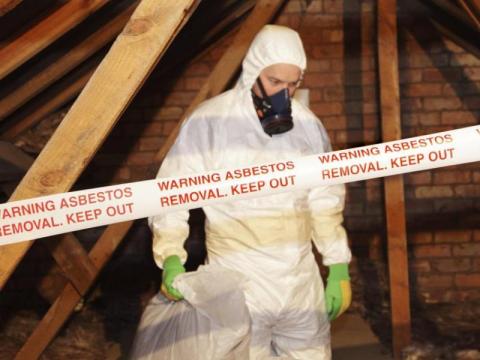
Submitted by Dianne Williams - Chair, PSAC Yukon Health & Safety Committee
The PSAC’s Ban Asbestos postcard campaign was launched at the National Health and Safety conference in Montreal, just days before the government announced its long-awaited asbestos strategy. The goal is a full asbestos ban, changed codes and regulations by 2018. At this point, the ban is still in the works, and not yet law. It is worth not-ing that currently the government has stated they HOPE to have the ban in place by 2018.
According to data compiled by the Association of Workers’ Compensation Boards of Canada, asbestosis or mesothe-lioma is the leading cause of workplace related death in Canada.
"We welcome the government’s decision to ban asbestos, which is the result of years of hard work by activists in the labour movement and our allies,” said PSAC National President Robyn Benson. “Asbestos is the leading cause of workplace-related deaths in Canada; we must put an end to this epidemic.”
The PSAC’s campaign to ban asbestos is still underway. Although the federal government has made a commitment to stop the use, export and import of asbestos containing material by 2018, there is still so much work to do. We can be proactive while the Federal government establishes the guidelines. We need your help to keep this issue alive in the minds of Yukoners
The Canadian Medical Associations voted in favor of des-ignating chrysotile asbestos as a hazardous substance in 2012. Due to the high risk of developing cancer decades after exposure to friable asbestos, at-risk workers should consider having their exposure put on record with their physician, get a CT scan if the doctor deems it appropriate, and discuss with their doctor when to file a YWCHSB claim.
In Yukon many older homes contain stable, non-friable asbestos. While it remains undisturbed and intact, there is very little risk to occupants, but in the rare occasion the asbestos is disturbed or made friable, the risk becomes sig-nificant. This is most likely to occur when removing old siding, flooring etc.
In response to the federal government’s announcement, Canadian Labor Congress President Hussan Yussuff stated “Now we need the provinces and territories to show the same leadership that the federal government has shown and move quickly to take stock of where asbestos is, harmonize regulation around disposal and remediation and ensure a comprehensive health response”.
Justin Lemphers, President of the Yukon Federation of Labours (YFL) states “The discovery of asbestos in a pub-lic school clearly demonstrates the need for a Yukon reg-istry. The YFL feels the Yukon Liberal Party has an oppor-tunity to protect Yukon workers and citizens by requiring, at a minimum, Red Seal standards for asbestos abatement are adhered to.”
How many public buildings have asbestos material? While this is determined, there is an opportunity to establish workplace guidelines, a Yukon registry and public educa-tion relating to removal and disposal. The Workplace Hazardous Materials Information System (WHMIS) could identify asbestos-containing products. Consider address-ing this in your collective agreement, in joint workplace health and safety committees and at the dinner table.
| Attachment | Size |
|---|---|
| 127.33 KB |
